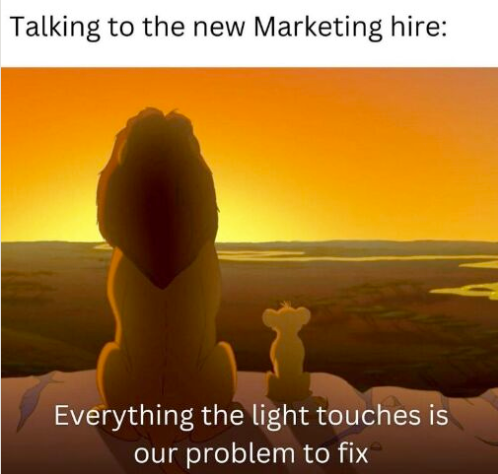
Every day, millions of new blog posts are published on the web.
How can you effectively create and promote your content to have a chance of competing, and gain consistent, legitimate traffic?
Here are 8 priceless content marketing tips and strategies, which are the ideal starting point to get more value out of your blog content.
1. Define Your Audiences
The first rule of content is to define who is your audience(s). This is the only way to know which topics you should cover to be relevant to different readerships.
Segment your audience into the various personas that are likely to become customers, and then rework your existing content to match those segments. In doing so, you can focus your blog posts toward different reader ‘groups’, maximizing the potential stream of traffic that visits your website from multiple niches.
If there are certain content pieces that are not bringing enough traffic to your site, remove them or rework them for a specific segment. Conversely, if you have particular content pieces or blogs that are working well, update and refresh them to drive even more interest and engagement.
2. Establish the Goal of the Content
Each content piece or content marketing campaign should have a well-defined goal. For example, a blog piece designed to capture certain keywords has the goal of improving search engine rankings for those keywords. A thought leadership blog post aims to build authority and conversation around a relevant issue, driving awareness of your brand.
Focus on long-tail keywords that are highly relevant to your niche, rather than investing resources in keywords that are out of reach. Research what your potential audiences are interested in reading about or watching, and build a content tree or calendar that addresses those topics. And make sure to set a clear goal or objective for each topic. Be specific. The more specific and data-focused your KPI, the clearer your path to achieving it will be.
2. Give Your Audience Reasons to Engage with Your Content
If you want to build a loyal audience, you must provide some kind of added value. There is so much content out there; unless you can keep it fresh and in touch with your readers’ mindsets, you won’t be able to engage their interest.
Not every blog post or content piece can be a groundbreaking masterpiece. But you can elevate your content both in terms of quality and search engine visibility by including elements such as:
- Infographics
- Videos and GIFs
- Product screenshots (if relevant)
- FAQs
- Charts & graphs
- Polls, quizzes, and other interactive features
- Gamification
…See what I mean?

3. Don’t ‘Sell’
The purpose of content is not to sell your brand or product. Leave that to the copywriters.
Content marketing is a demand generation strategy; great content should drive the audience to become more curious, more interested, and more engaged. That way, they begin to associate your brand with something positive, whether it be helpful information, good entertainment, or a different insight or point of view that enriches their own experience. Tell a good story. This is the key to building awareness and engagement and creating relationships with potential customers.
Expand your content offerings with value-added perspectives from guest bloggers and experts from within your company. This is a good way to get traction from social sharing and expand your reader base too.
4. Content Marketing Strategies: Native Advertising
Native advertising plays a critical role in a successful content marketing strategy, especially as consumers are becoming more wary of social media. Native ads seamlessly integrate your content with the form and function of the web page that it appears on. Online users find native ads less disruptive and intrusive than regular display or banner ads, so they are more likely to engage with them.
As a result, native advertising helps brands gain visibility, broaden their exposure, and drive higher click-through rates and conversions, ultimately helping to improve the ROI of your content marketing strategy.
5. Use Multiple Channels to Promote Your Content
In digital advertising, as in life, don’t put all your eggs in one basket. It is important to use multiple channels to promote your content; this will help broaden your potential reach and engage audiences on the different websites and platforms where they spend their time.
Consider partnering with several high-quality ad networks and social networks that offer broad reach and solid audience targeting features. Include link building as part of your strategy to broaden exposure, via guest blog posting, video marketing, and influencer marketing. Partnering with influencers in your industry will give you access to their audiences, and it’s a great way to market your content to people who are a natural fit for your brand.
7. Optimize Everything
Every piece of content you write must be optimized for search engines. No ifs or buts. Without effective optimization, your content won’t rank highly and won’t get the visibility it needs.
Search algorithms change often, and the latest Google update puts an emphasis on E-E-A-T: the extra E stands for ‘experience’. Google is giving higher rankings to content that speaks to authentic experiences. Try to be as specific and personalized as you can – don’t just write about how to plant tulips; write about what happened when you were planting tulips and the lessons you learned that will help your readers.
8. Analyze Your Content Performance Data
Watch your analytics. This is one of the most important parts of an effective content marketing strategy.
Your blog and content are dynamic, and so is your audience. Trends and topics change over time, What worked last week won’t work next month. Plus, search engine rankings are always shifting so you need to keep an eye on how well your content is performing in search.
For those of you who are numbers-wary, don’t despair. You don’t need to be a data analyst to keep a finger on the pulse. Frequently check pageviews and bounce rates of blog content to see which blogs are getting traction. Use Google Search Console to see how you are ranking. And don’t forget to watch your competitors and other content producers on Semrush or Google Trends so you know what to write about next.

Comments (0)